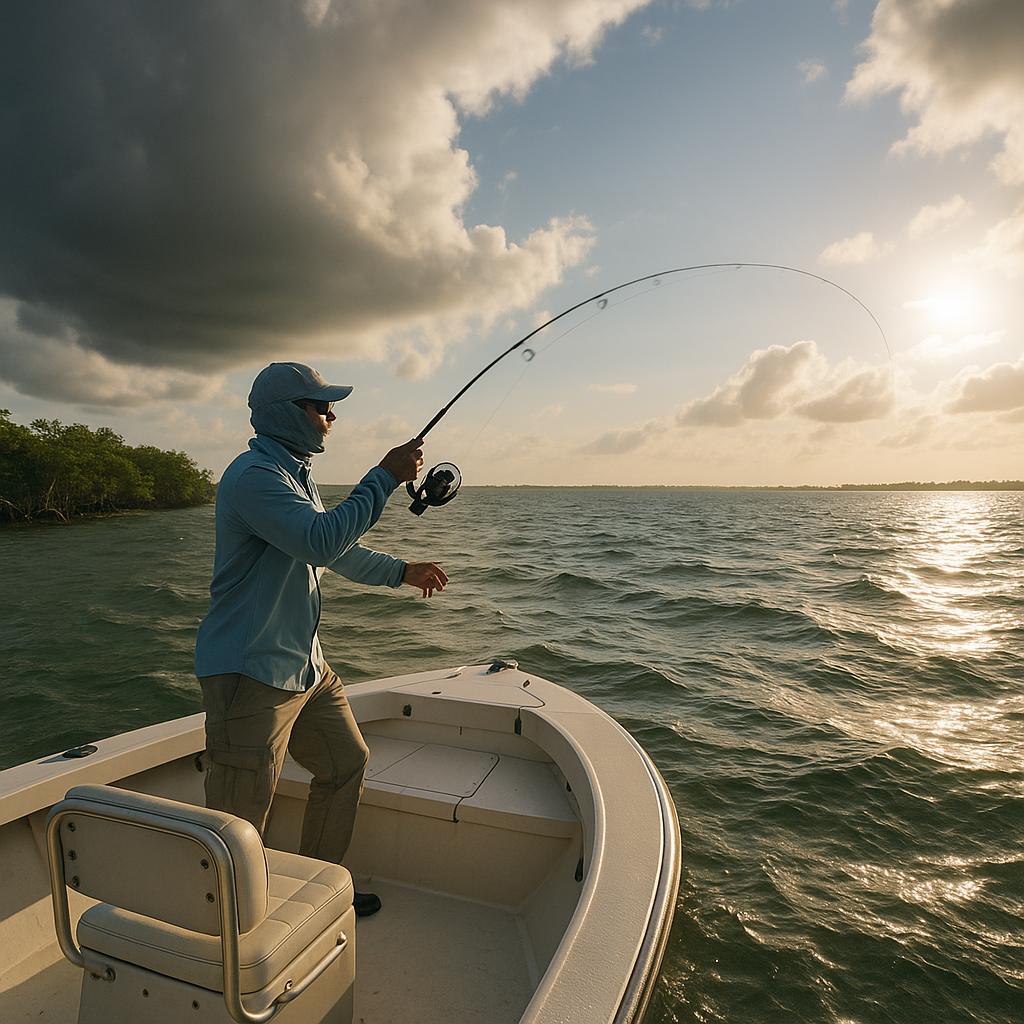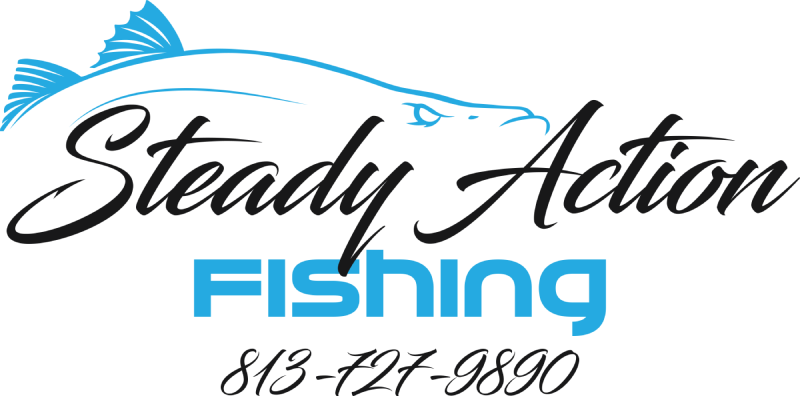By using our website, you agree to the use of cookies as described in our Cookie Policy
Wind decides how your day goes on Tampa Bay. It pushes bait, moves fish, and makes you rethink every cast. Some days it helps, some days it ruins your plan. Ignore it and you’ll miss out. Pay attention and you’ll catch more fish, plain and simple.

Wind Direction Changes Everything
Ask anyone who fishes Tampa Bay year-round. Wind direction isn’t just a detail. It’s the first thing to check before launching. Each direction brings its own set of challenges and opportunities:
- East wind drains water from the flats. Fish drop into channels and deeper holes. Shallow spots empty out fast.
- West wind piles water against the shoreline. Mangroves flood. Redfish and snook push deep into the roots, chasing bait that rides the rising water.
- North wind clears the water. Sight fishing gets easier. Spooky fish like mangrove snapper show themselves on the sand and grass edges.
- South wind brings warmth. Fish get active. Bait schools move shallow, and predators follow.
- Anything over 15 mph? Boat control turns into a battle. Drifts speed up. Anchors drag. Precision goes out the window.
Every direction forces a change in plan. The best anglers don’t just notice, they react. They know where fish stack up when the wind shifts, and they move before the bite shuts down.
When Wind Helps and When It Hurts
Not all wind is bad. A steady 5-10 mph breeze puts a ripple on the water. That surface chop hides the boat, muffles noise, and lets you get closer to fish that would bolt on a calm day. Snook tucked tight to docks or oyster bars become catchable. The wind turns the odds in your favor.
But let that wind climb past 15 mph, and things get tricky. Casting accuracy drops. Lines bow. Lures land off target. The boat drifts too fast, blowing past prime spots before you can work them. Even the best trolling motors and anchors struggle to hold position. Bait presentation suffers, and so does the catch rate.
Still, there’s a sweet spot. When wind and tide run together, current seams form. Those visible lines where water speed changes. Bait stacks up. Predators wait in ambush. These seams become feeding highways, and working them right can turn a tough day around. The trick is finding them and setting up so your bait drifts naturally through the strike zone. On our Tampa Bay fishing charters, we often target these current seams to maximize your chances at a great catch.
Where Fish Go When the Wind Blows
Fish don’t fight the wind. They use it. On gusty days, they shift to spots that offer shelter and easy feeding. Knowing these patterns saves hours of searching:
- Creek mouths and bayous: Calm water, less current, plenty of bait. Fish stack up here when open flats get too rough.
- Edges of deep grass flats: The drop-off breaks the current. Trout and redfish hold just inside the edge, waiting for food to wash by.
- Bridge pilings: Structure plus current equals a feeding station. Wind pushes bait against the pilings, and predators line up for an easy meal.
- Leeward shorelines: The downwind side stays calm. Baitfish gather, and gamefish follow. These spots often hold the best action when the rest of the bay is choppy.
- Channel edges: Stable water, predictable current, and a steady supply of food. Fish settle in and wait for the tide to bring dinner.
Dialing in on these wind-protected areas leads to more consistent Tampa Bay fishing success. The fish aren’t scattered. They’re concentrated where conditions work in their favor. We use our local knowledge to put you in the right place at the right time, even when the wind is up.
Smart Bait Placement in the Wind
Wind changes how every bait moves. Cast against the wind, and you fight a losing battle. Let the wind work for you. Cast uptide, let the bait drift naturally, and strikes come more often. For redfish and trout, soft plastics shine when worked with the wind, slow, steady retrieves across the current, right where fish expect to see an easy meal.
Live bait needs the same treatment. Pin a shrimp or pilchard on a light line, cast upwind, and let it ride the current. The bait looks natural, and fish respond. Try to force a presentation against the wind, and you’ll watch fish ignore it all day. Our guides at Steady Action Fishing Charters are always ready to help you adjust your bait placement for the best results in any wind conditions.
Boat Positioning That Delivers
Boat control separates the pros from the rest. In wind, sloppy positioning ruins good water. Shallow water anchors and spot-lock trolling motors become essential tools. They hold the boat steady, letting you work a productive area from every angle. No wasted casts. No drifting off the bite. The best setups put the wind at your back, so every cast lands where it should and every bait moves like the real thing.
- Anchor upwind and cast downwind for longer, more accurate presentations.
- Use the wind to drift along grass edges or mangrove lines, covering water efficiently.
- Adjust boat angle to match the direction of current seams and bait movement.
Every detail matters. The right position means more hookups and less frustration. We take pride in boat positioning and using our experience to keep you on the fish, no matter what the wind is doing.
Book Your Tampa Bay Fishing Trip
Ready to put these wind fishing tactics to work? Call Steady Action Fishing Charters at 813-727-9890 or contact us to book your next Tampa Bay fishing trip. Our experienced guides know exactly how to find and catch fish in any conditions.
‹ Back


